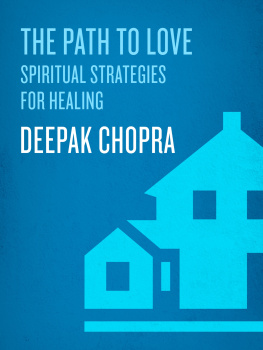FEEL BETTER EVERY DAY
Maybe youre taking up a new activity or challenging your mind with a new hobby or interest. Or maybe youre managing a health condition for yourself or a family member - making sure you get the best care. Or maybe youre wondering about the science behind the latest health headlines.
Welcome to wellness for grown-ups. Where do you turn for guidance and reliable information?
Dedicated to helping you manage your health and ensure your long-term fitness, AARP offers the best in wellness wisdom, from nutrition advice that will put more spring in your step to tips and tricks for sharpening your brain to specifics about challenges like high cholesterol, diabetes and arthritis.
If youre curious what the latest superfoods and supplements can mean for your health, we can help. If youre walking around the neighborhood with a friend, stepping up your yoga practice, or training for your first triathlon, youll find strategies to help you do it better and enjoy it more. Weve sorted through the science to explain what the latest research really means to your everyday health and well-being and what breakthroughs are on the way. Weve got ideas to challenge your mind and reduce your stress levels, suggestions for feeling great every day, and new discoveries that will help you take care of yourself and the ones you love most.
Best of all, weve narrowed down the health and wellness tips that you can trust. So feel better know more and do more of the things you love. Were here to help.
Table of Contents
This book is dedicated to seekers of unity across time and space
Preface
The Four Yogas
Often one goes for one thing and finds another.
Neem Karoli Baba
The word yoga is related to the English word yoke. Yoga is the union of body, mind, and spiritthe union of your individuality with the divine intelligence that orchestrates the universe. Yoga is a state of being in which the elements and forces that comprise your biological organism are in harmonious interaction with the elements of the cosmos. Established in this state, you will experience enhanced emotional, psychological, and spiritual well-being and will increasingly notice the spontaneous fulfillment of your desires. In yogain union with spirityour desires and the desires of nature are one. As you participate in the process of creativity along with the infinite being, your worries fall away and you feel a sense of lightheartedness and joy. There is a spontaneous blossoming of intuition, insight, imagination, creativity, meaning, and purpose. You make correct choices that benefit not only you but also everyone affected by your choices. When in the book of Matthew Jesus says, My yoke is easy, and my burden is light, he is expressing the core principle of yoga. His intelligence is aligned with cosmic intelligence, his will with divine will.
Traditionally, there are four forms of yoga: Gyan, Bhakti, Karma, and Raja. Gyan yoga is the yoga of understanding. The yoga of understanding is also the yoga of science. (Science is after all, the knowledge of natures laws.) The laws of nature are Gods thoughts. Science is God explaining God to God through a human nervous system. Science is not an enemy of spiritual awakening but rather a potentially helpful friend. Todays science reveals to us the mysterious nonlocal domain where everything is instantly correlated with everything elsewhere time, space, matter, energy, and information resolve into a field of pure potentiality. This is the realm where the immeasurable potential of all that was, all that is, and all that will be manifests and differentiates into the seer and the scenery, the observer and the observed, the knower and the known.
The yoga of understanding has been referred to in the Upanishads as the razors edge, and we are cautioned to tread carefully on this path. As we gain understanding of the laws of nature, we run the risk of arrogance. Arrogance inflates the ego, and the ego overshadows the spirit. The original sincere quest for discovery leads to an alienation from the very source with which intimacy was sought.
Truly great scientists are known for their humility, for even as they explore and unravel the secrets of the unknown, the unknown looms larger and becomes ever more mysterious. Humility leads to wonder, which leads to innocence. The return of innocence invites us to enter the luminous mystery of life and surrender to it.
The yoga of knowledge can be a wonderful path if we are mature enough to understand that there are seductive temptations that may entrap us for a while in diversions of the intellect.
The second yoga is Bhaktithe yoga of love and devotion. Bhakti is love of God but also the expression and blossoming of love in all your relationships. The divine light of God resides in all that is alive, or for that matter, even that which we consider inanimate. Through our relationships with others, we discover our higher self. As we embark on this journey, we may go through stages of attraction, infatuation, communion, intimacy, surrender, passion and ecstasy until ultimately we once again arrive at the source of love and the source of life.
The yoga of love is a wonderful path, but we must not confuse love with self-absorption, self-importance, or self-pity. If you pay attention to love, think about love, express love, respond to gestures of love, and make love the basis for all your choices, then you are practicing Bhakti yoga, the yoga of love.
The third yoga is referred to as Karma yoga. The ultimate expression of Karma yoga is the recognition that all action belongs to the Supreme Being. When you have an inner attitude that all your actions come from God and belong to God, you are a Karma yogi. The inner dialogue of a Karma yogi is, I am an instrument of the eternal infinite being. Every breath of mine, every act of mine is a divine movement of the infinite. My thoughts and actions come from the infinite and return to the infinite. True practice of Karma yoga leads to spontaneous detachment from outcome and one-pointed focused mindfulness as you perform your actions. Action from this level of consciousness is not binding; rather, it liberates you and enables you spontaneously to recognize that you are an eternal being on a cosmic journey. Karma yogis have no anxiety because they have no worry. The Karma yogi knows that God is performing the action and takes care of the results.
The fourth yoga is known as Raja yoga, the main subject of this book. Raja yoga is frequently referred to as the royal path to yoga because it is rich and abundant in knowledge and experience. Raja yoga can be practiced by anyone with a little bit of training.
Raja yoga is the path of union through practices that take your awareness inward. The essence of Raja yoga is an integration of body, mind, and soul through procedures that enhance mind-body coordination. These techniques awaken poise, grace, strength, and the development of centered awareness even in the midst of chaos and turmoil. They improve your physical health and your mental clarity while heightening your senses of perception. As a consequence of these practices, you are able to experience increased vitality along with better mental and physical capacity. Raja yogis have greater enjoyment of life, while enthusiasm and inspiration become an everyday experience.






















